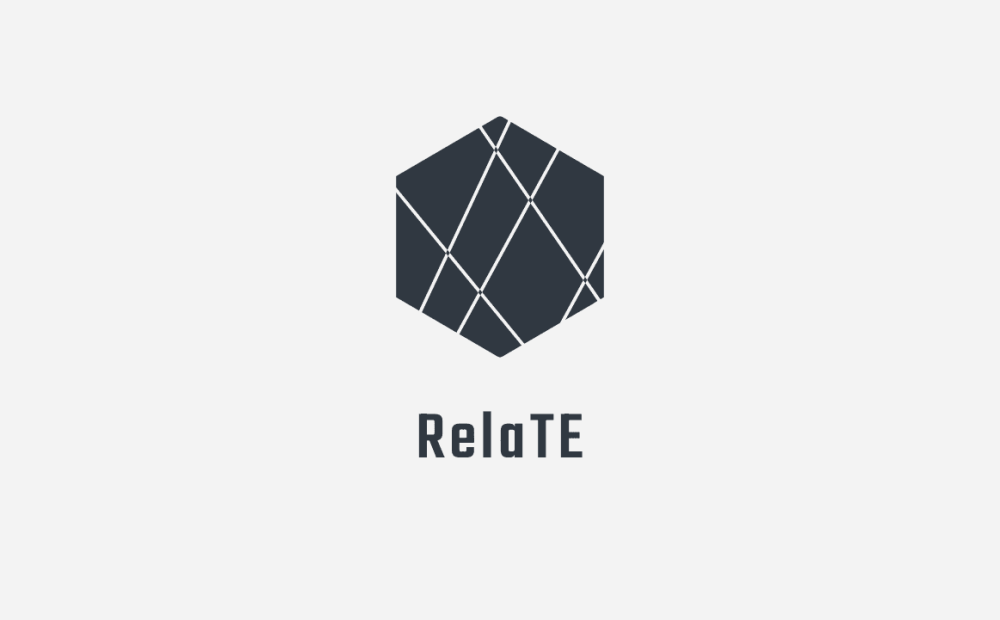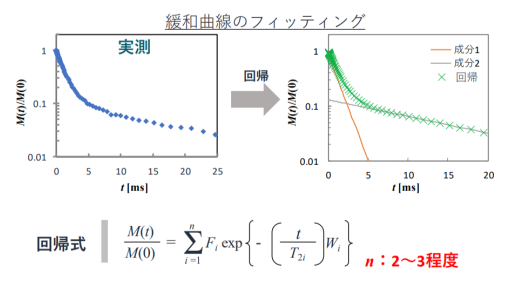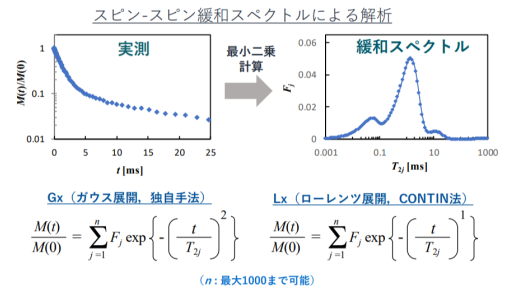RelaTE

Time-Domain Nuclear Magnetic Resonance (TD-NMR)
Relaxation Spectrum Analysis Software
For the relaxation curve data M(t) obtained using the Bruker minispec mq20 time-domain nuclear magnetic resonance (TD-NMR) instrument,
Fit the superposition of Lorentz, Gauss, or Weibull-type exponential functions given by the relaxation time T2j,
This software is for calculating the relaxation spectrum Fj (superposition coefficient).
About the SoftwareAbout Software
01Problems with Conventional Methods
The analysis is highly arbitrary (number of components, Weibull parameters)
Comparing multi-component systems is difficult

02Analysis using RelaTE (n: approximately 100–200)
Analysis Using Spin-Spin Relaxation Spectra

Information obtained
Crosslinking degree of polymers, network chain concentration, amount of additives, degree of degradation, plasticity, stress state, etc.
Information on molecular mobility and structural heterogeneity (particularly useful in structural analysis of rubber materials)
Examples of Application Fields
Material Classification:Design of new polymer materials and process optimization
Food sector:Evaluation of food quality and safety
Pharmaceutical field:Investigation of the crystallinity, solubility characteristics, and stability of pharmaceuticals
Petroleum and Science:Evaluate the fluidity, moisture content, viscosity, and diffusion behavior of liquids containing chemicals in petrochemical products and chemical processes.
Medical Field:Investigate the tissue properties of biological tissues and substances within the body, the nature of tumors, and the absorption, distribution, metabolism, and excretion (ADME) characteristics of pharmaceuticals.
References
Yan Fu Ren; Koji Murakami;Shigeki Higasa; Nishi Masashi
Journal of the Japan Society for the Study of Learning 2010, 46, 326.
Yan Fu Ren; Koji Murakami
Journal of the Japan Society for the Study of Learning 2012, 48, 121.
Yan Fu Ren; Koji Murakami;Takuya Ishida
Journal of the Japan Rubber Association 2024, 97, 359.
SpecificationsSpecification
| Target Operating Systems:Windows 10 and later, x64 | |
| Recommended Computer Specifications:Processor: Core i5 2 GHz or higher, Main memory: 8 GB or more |
|
| Target file:Relaxation curves obtained using the Bruker minispec mq20 M(t) file (.dps) |
|
| Visual representation:File name, T2j format, Decompression level, Iteration count, Σ |Fj correction|, Σ |measurement M(t) – regression M(t)|^2 measurement M(t) Regression M(t) graph, M(t) residual graph, Fj graph, Fj Correction Graph (Real-time) |
|
| Relaxation time T2j form:T2, log(T2), 1/T2, log(1/T2) Set minimum and maximum values, then divide into equal intervals |
| Number of T2j units:1 ~ 1,000 | |
| Number of repetitions:1 ~ 1,000,000,000 | |
| Regularization parameter:0 ~ 100 | |
| Expand Method:Linear combination of Lorentz, Gauss, or Weibull type exponential functions | |
| Save:Fj, Measurement M(t) & Regression M(t) | |
| Calculation in progress:Performed with the immediately preceding parameters | |
| License Management:USB hardware key |
Ordering and Request ProcessFlow
- We accept inquiries by phone or email.
- First, feel free to contact us by phone or email.
We will respond promptly.
- We will listen to and understand your needs.
- We will provide you with a quotation following a visit or a meeting via our web conferencing system.
- TOP
- Product Information
- RelaTE
